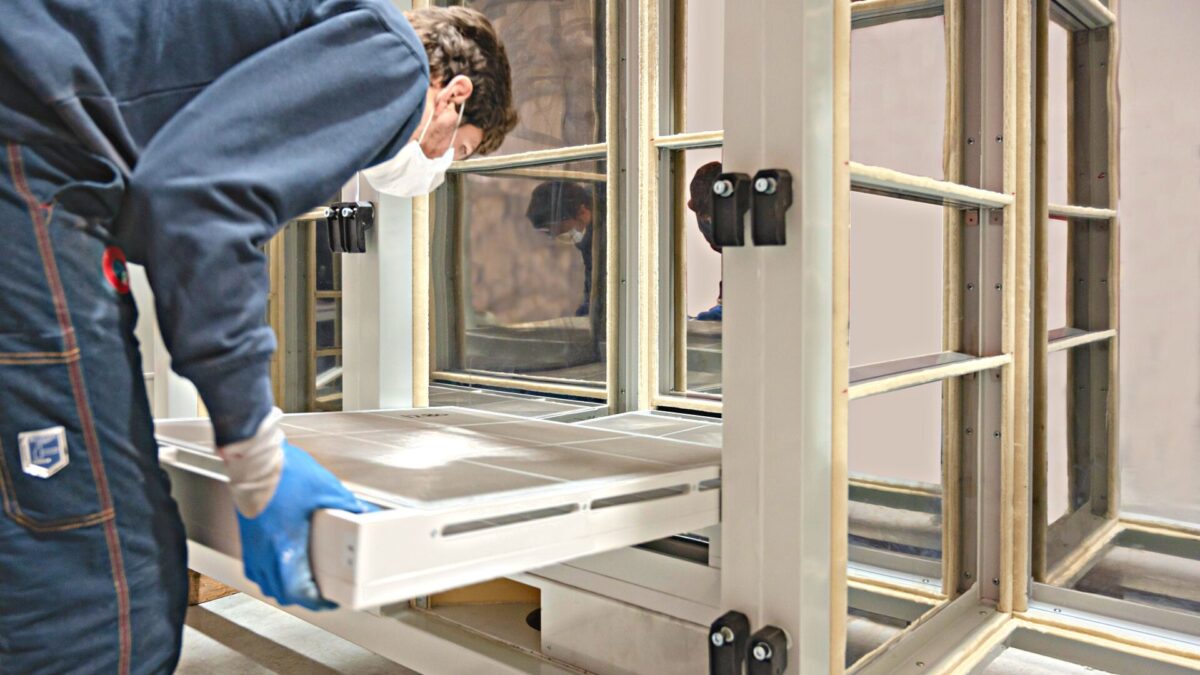The demand for standard plastic and antimicrobial sieves is increasing. To respond to the growing requests for information and clarifications, we have dedicated a webinar to this topic. For those who have missed it, we share the interview with the experts Marco Galli and Simone Pedrini who illustrate the benefits and the main differences compared to conventional wooden ones.
Ocrim, as a top player in the market, has always dedicated resources to the search for innovative solutions and materials capable of improving plant performance and the quality of milling production. The plastic sieves have been the subject of careful studies and experiments, the results of which have allowed our design department to create two versions, standard and antimicrobial. To better understand its features and advantages, we interviewed our experts Mr Marco Galli and Mr Simone Pedrini – respectively, director of the technology department and mechanical design manager at Ocrim.
Mr. Marco Galli, as far as the performance of the mill and its maintenance are concerned, what is the main difference between standard plastic and antimicrobial sieves
If we consider that using plastics instead of wood improves the hygiene and health qualities of the finished product, it becomes harder to distinguish between sieves made of plastics and sieves made of antimicrobial plastics. The fact that these two materials differ is bound to also affect system functionality. Plansifters need to be regularly cleaned. The frequency of cleaning depends on weather conditions, but it is done no less than three to four times a year. Every time cleaning takes place, the plant has to be shut down and personnel must be assigned to carry out this task, which inevitably affects production and the running costs of the plant. With the antimicrobial sieves’ solution, this maintenance operation can be carried out less frequently, which reduces overall operating costs and improves TCO (Total Cost of Ownership).
Mr Simone Pedrini, what are the differences between wooden and plastic/antimicrobial sieves in terms of their construction?
The first major difference is that wood is a composite material whereas plastic is a homogeneous material. This affects various aspects. A “composite material” is a material consisting of regularly arranged fibres or layers, which are joined together by a binding agent; a “homogeneous material”, instead, is a material that has a uniform composition throughout and evenly distributed physical and mechanical characteristics. Homogeneity allows for more efficient machining, which results in better finishing and dimensional repeatability: while wooden parts need to be formed through various passages using several machine tools, plastic parts are created through multiple machining processes, which are carried out on the same machine in a single passage. This ensures a more accurate finished part. For practical reasons, the plastic sieve will deform more stably over time due to the pressure of the channel and exposure to moisture from the product. As for the structure of the sieve: the wooden parts require mechanical fixings (screws, nails and staples) or gluing with specific products that are not always suitable for use in the food industry. The structure of the plastic sieve, in contrast, has parts that can be autogenously welded, which directly melts the material without requiring further intervention. Along with the option of multi-sided machining, which has already been mentioned, this has allowed us to reduce the number of sieve attachments while maintaining our flexibility and ability to adapt to the technological scheme, which is something that Ocrim is known for. As a result, the risk factor for the sifted product is lower.
And, from a sustainability perspective, is plastic or wood more effective?
In the case of plastic sieves, since the starting material is a single polymer, all processing waste can be recovered, reground and put back on the market as a 100% recyclable raw material, therefore closing the circle with a green approach that is increasingly becoming an imperative, especially for companies. In the case of wood, instead, this recycling process is not complete, since the presence of primers means that the resulting recycled materials are of a lower quality. Naturally, Ocrim has chosen a polymer that is suitable for prolonged or incidental food contact, which has obtained a certification that complies with both European and US directives.
Can plastic or antimicrobial sieves be installed in plansifters, whether they are Ocrim branded or not, which normally hold wooden sieves?
The design of Ocrim sieves is so flexible that it allows everything that was once possible with wood to be reproduced on plastic. For our machines, it is evident that the schemes are equivalent. As regards non-Ocrim machines, we can confirm that the changeover is possible ( see the previous post https://www.ai-lati.eu/2021/12/15/ocrim-sieves-now-on-any-machine/) and has already been successfully accomplished. In this case, we suggest having an Ocrim technician perform a preliminary inspection in order to assess the condition of the machine and the types of sieves. The inspection is even more important if the machine to be upgraded was produced before 2000, when the available methods and means of construction differed greatly from those available today.
In keeping with this approach, as mentioned before, Ocrim has successfully replaced wooden sieves with plastic ones on its own machines and on those of other brands and has therefore significantly improved all sanitation aspects, making it possible to increase the sieving surface of the plant when required.



